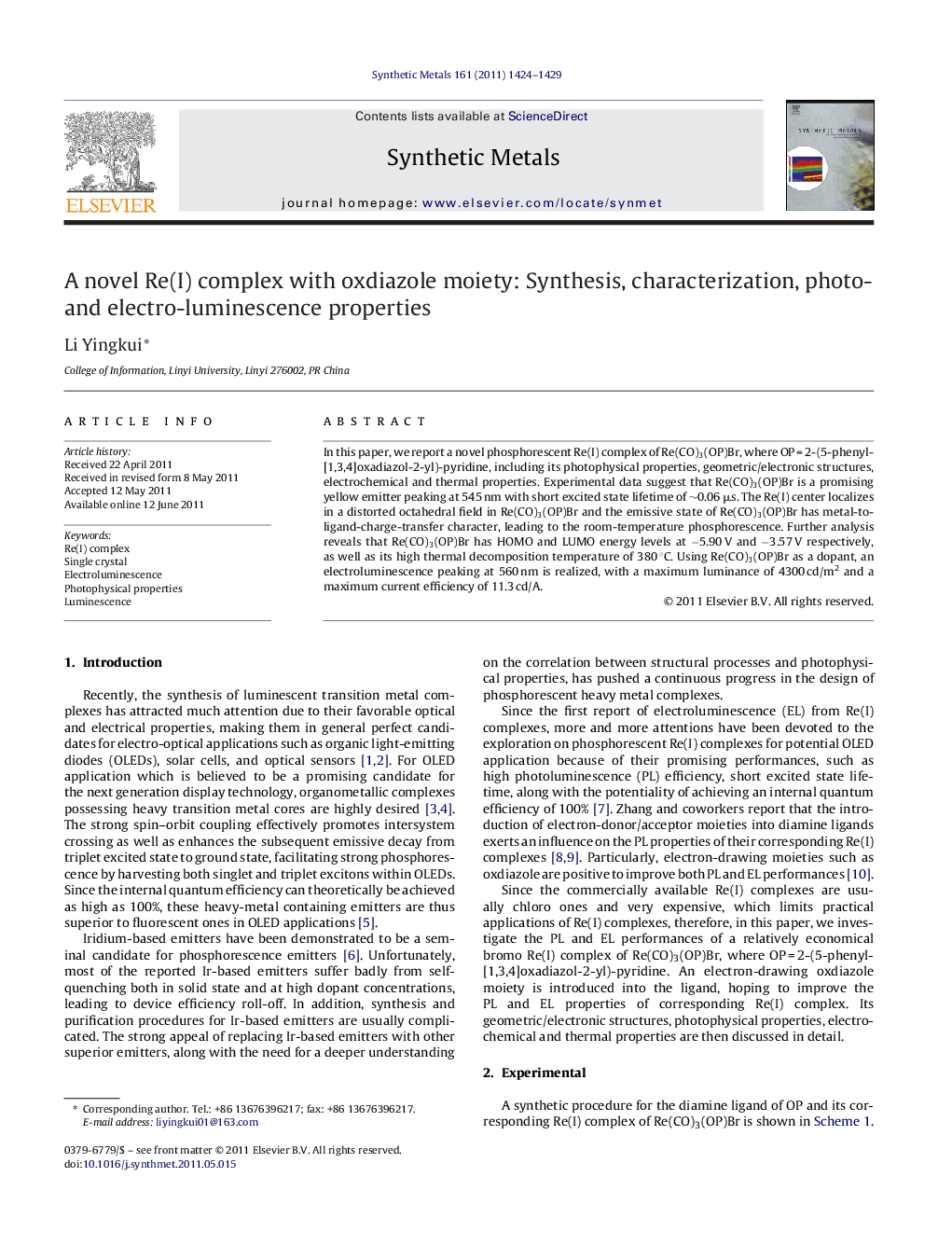| Article ID | Journal | Published Year | Pages | File Type |
|---|---|---|---|---|
| 1442033 | Synthetic Metals | 2011 | 6 Pages |
In this paper, we report a novel phosphorescent Re(I) complex of Re(CO)3(OP)Br, where OP = 2-(5-phenyl-[1,3,4]oxadiazol-2-yl)-pyridine, including its photophysical properties, geometric/electronic structures, electrochemical and thermal properties. Experimental data suggest that Re(CO)3(OP)Br is a promising yellow emitter peaking at 545 nm with short excited state lifetime of ∼0.06 μs. The Re(I) center localizes in a distorted octahedral field in Re(CO)3(OP)Br and the emissive state of Re(CO)3(OP)Br has metal-to-ligand-charge-transfer character, leading to the room-temperature phosphorescence. Further analysis reveals that Re(CO)3(OP)Br has HOMO and LUMO energy levels at −5.90 V and −3.57 V respectively, as well as its high thermal decomposition temperature of 380 °C. Using Re(CO)3(OP)Br as a dopant, an electroluminescence peaking at 560 nm is realized, with a maximum luminance of 4300 cd/m2 and a maximum current efficiency of 11.3 cd/A.
Graphical abstractFigure optionsDownload full-size imageDownload as PowerPoint slideHighlights► A novel phosphorescent Re(I) complex is synthesized. ► Photophysical, electronic, electrochemical, and thermal properties are studied. ► Yellow emission peaking at 545 nm is realized. ► A maximum current efficiency of 11.3 cd/A is achieved.
